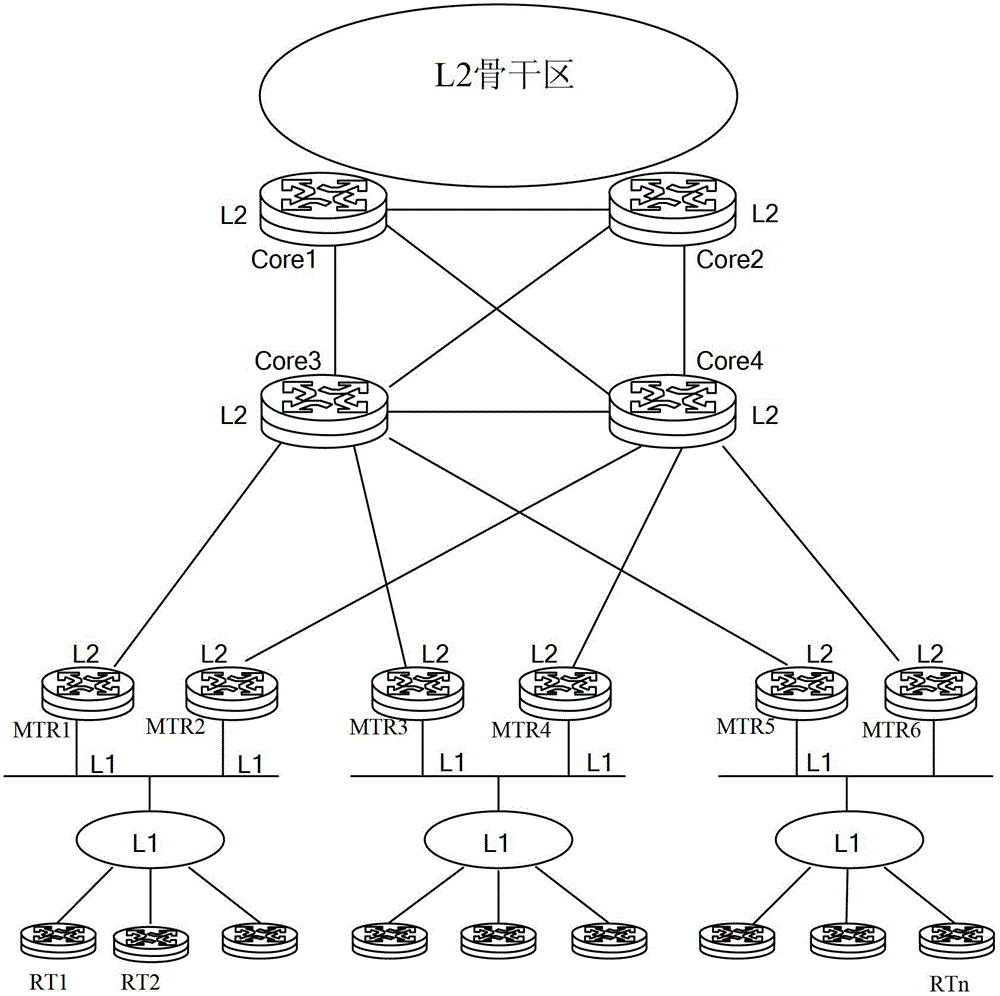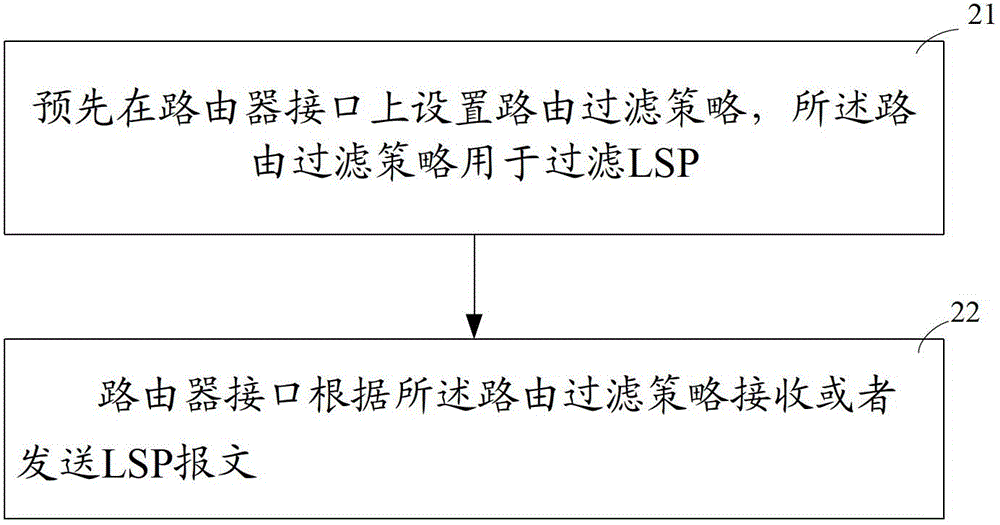Method and Router for Reducing Link State Packet Flooding
A link state and router technology, applied in the field of communication, can solve the problems of increasing CPU processing load, large LSDB capacity, and inability to achieve LSDB isolation
- Summary
- Abstract
- Description
- Claims
- Application Information
AI Technical Summary
Problems solved by technology
Method used
Image
Examples
Embodiment 1
[0042]In order to prevent RT2 from receiving the LSP sent by RT1 to MTR, configure an interface routing filtering policy on the interface between MTR and RT2, specifying that when MTR receives an LSP from RT1, it will not send it to RT2, that is, in MTR , the interface filtering routing policy on the interface with RT2 is set with the system ID of RT1, as long as the MTR checks on the interface with RT2 that the system ID of the source router that generated the LSP is RT1, it will not send the LSP to RT2 , so as to realize the LSDB isolation of RT1 and RT2.
Embodiment 2
[0044] To prevent RT2 from receiving LSPs from other RT devices, configure a global routing filtering policy on the interface between MTR and RT2, specifying that MTR only sends the LSPs generated by itself to RT2, that is, only MTR communicates with RT2. Check out the system ID of the source router that generated the LSP on the interface between the routers, and then send it to RT2. In this way, the LSPs sent by RT1 or other RT devices to MTR will not be sent to RT2, so that RT2 and other RT devices can completely communicate with each other. isolation. According to the above description, configure the global routing filtering policy on the interface between the specified MTR and RT2; similarly, if you want RT3 not to receive LSPs from other RT devices, then configure the global routing filtering policy on the interface between the designated MTR and RT3; By analogy, multiple interfaces can be specified on the MTR with a global routing filtering policy, and the interface with...
PUM
 Login to View More
Login to View More Abstract
Description
Claims
Application Information
 Login to View More
Login to View More - R&D
- Intellectual Property
- Life Sciences
- Materials
- Tech Scout
- Unparalleled Data Quality
- Higher Quality Content
- 60% Fewer Hallucinations
Browse by: Latest US Patents, China's latest patents, Technical Efficacy Thesaurus, Application Domain, Technology Topic, Popular Technical Reports.
© 2025 PatSnap. All rights reserved.Legal|Privacy policy|Modern Slavery Act Transparency Statement|Sitemap|About US| Contact US: help@patsnap.com



